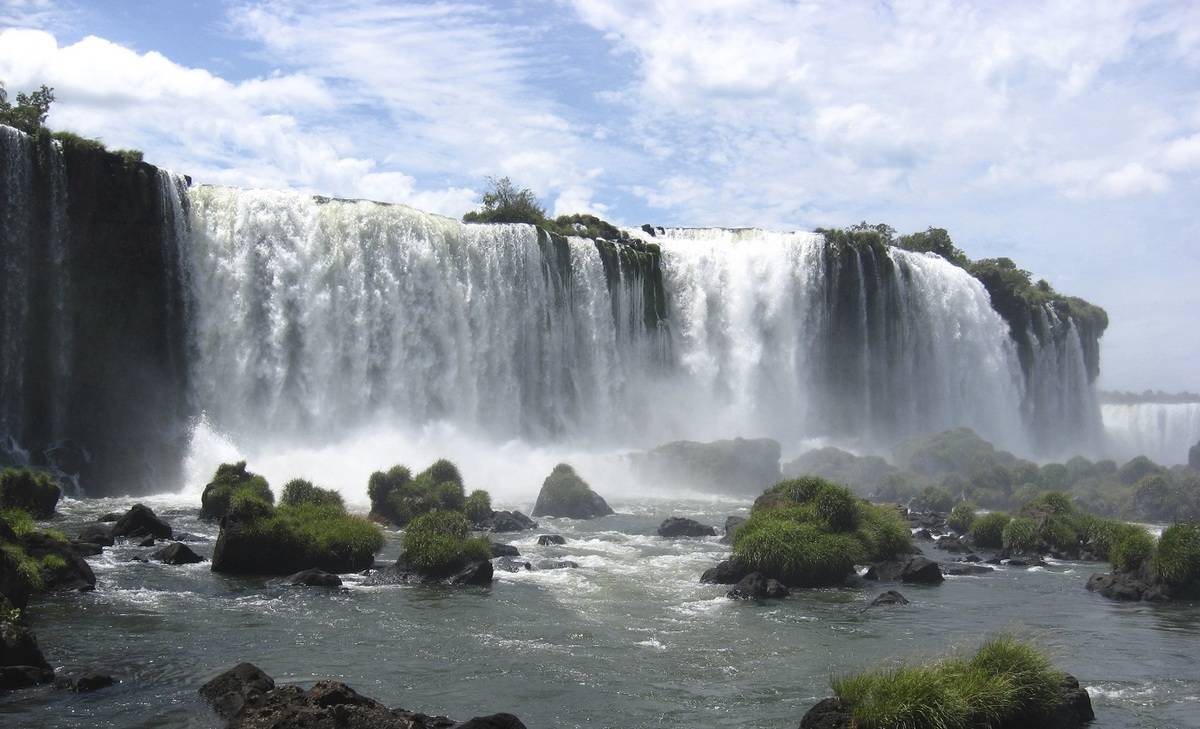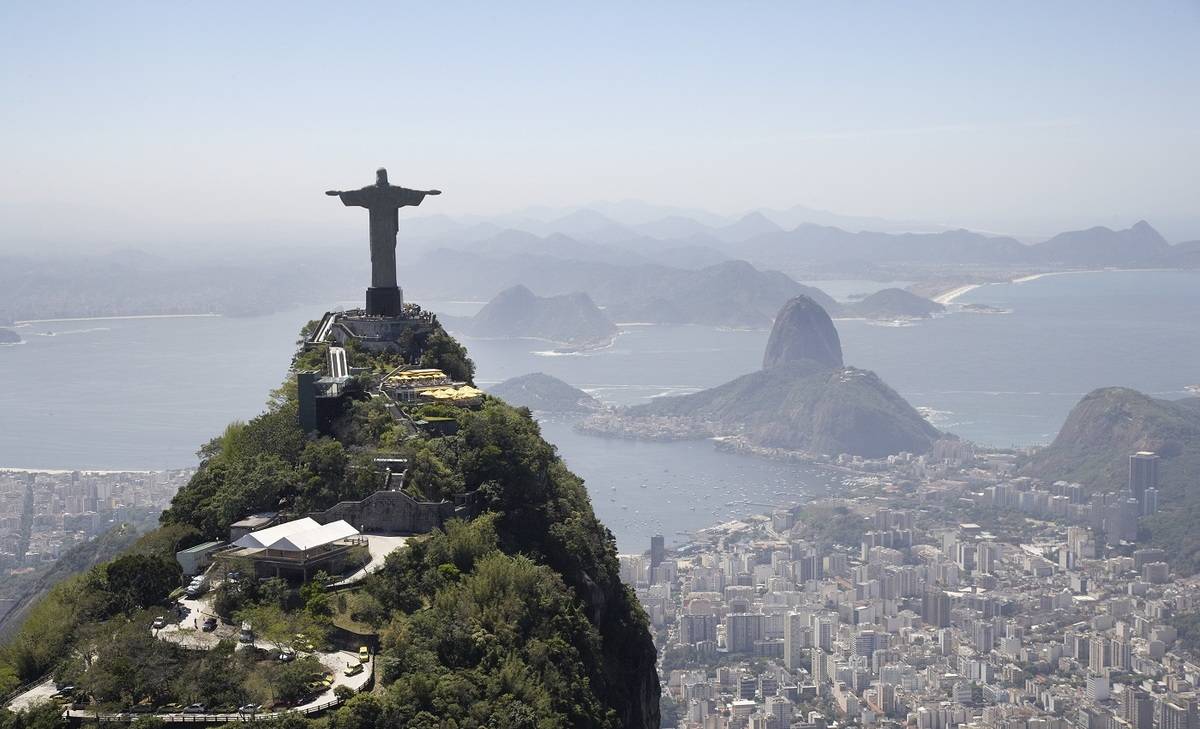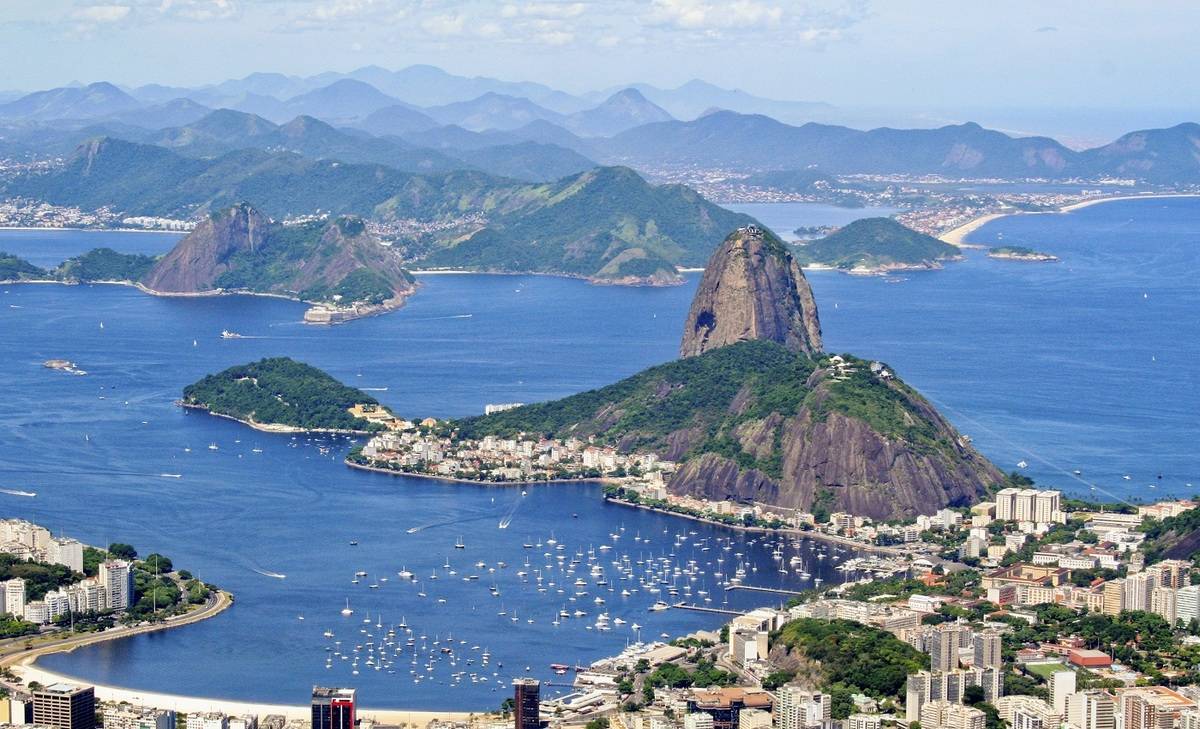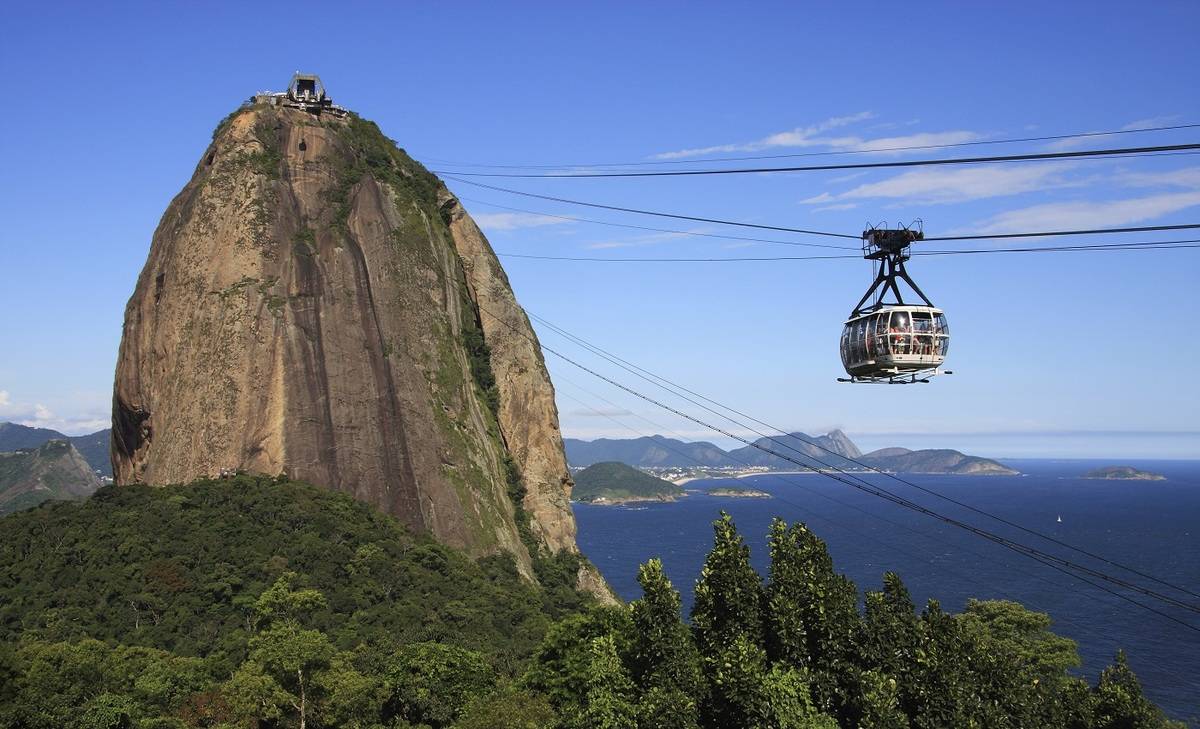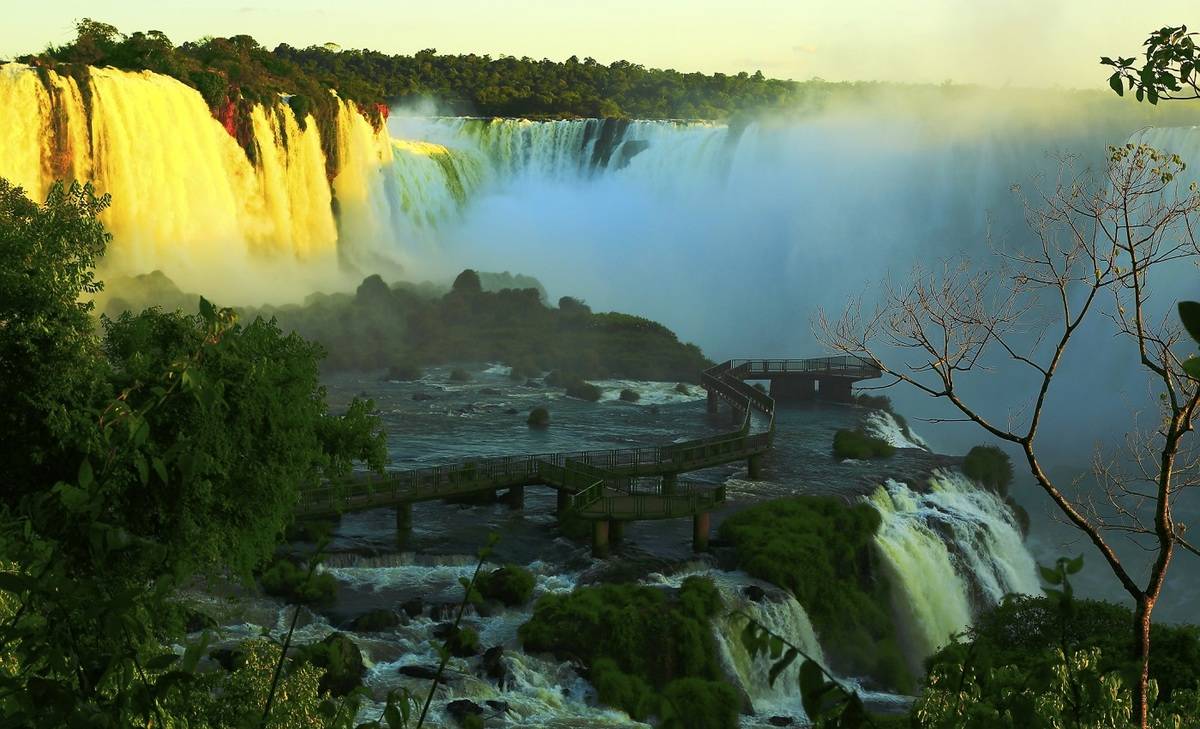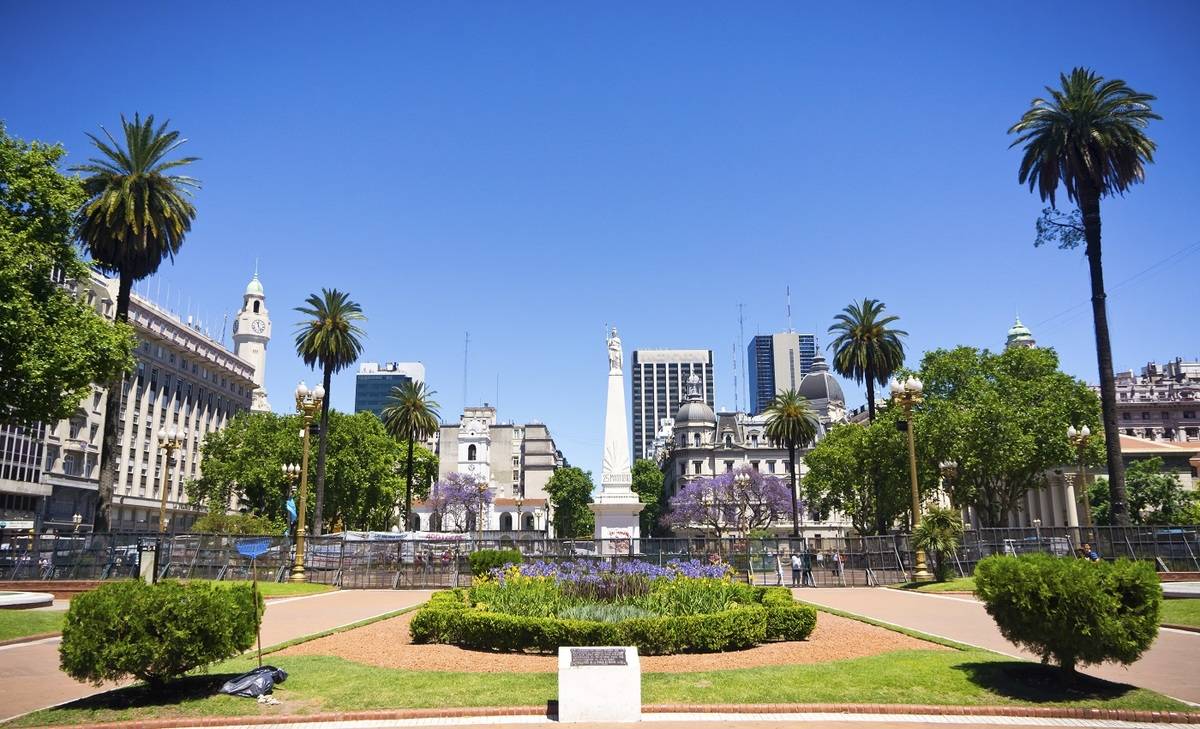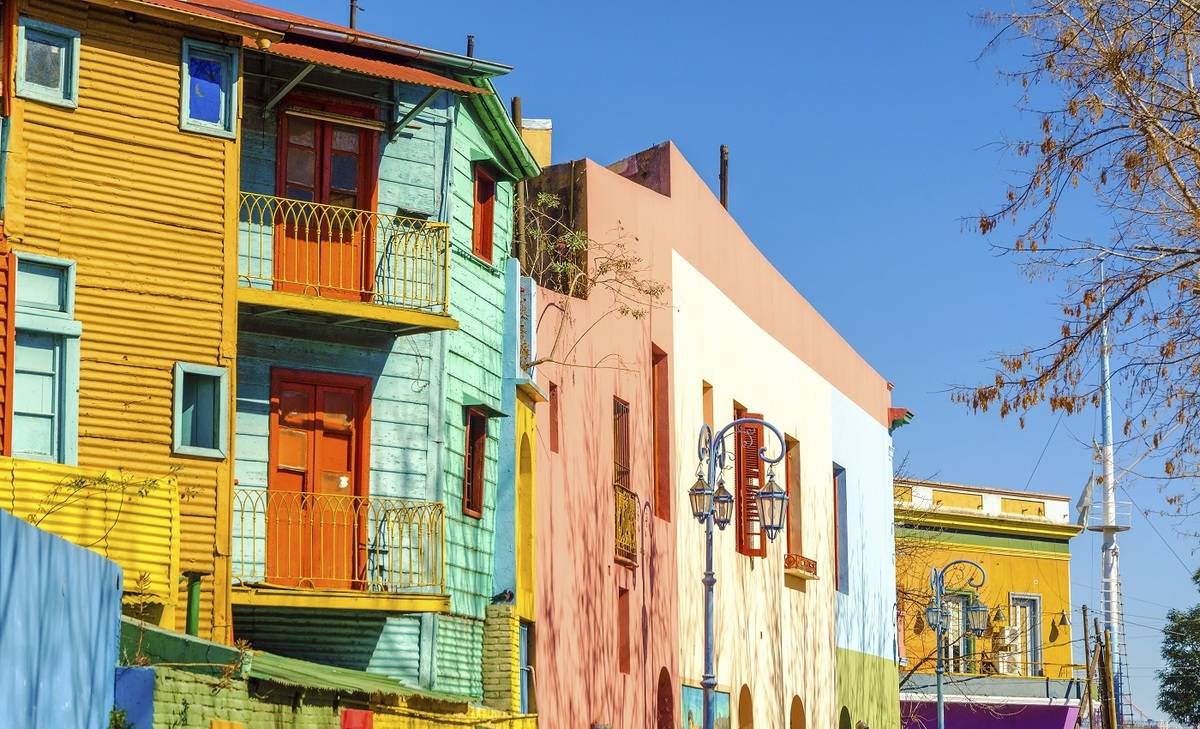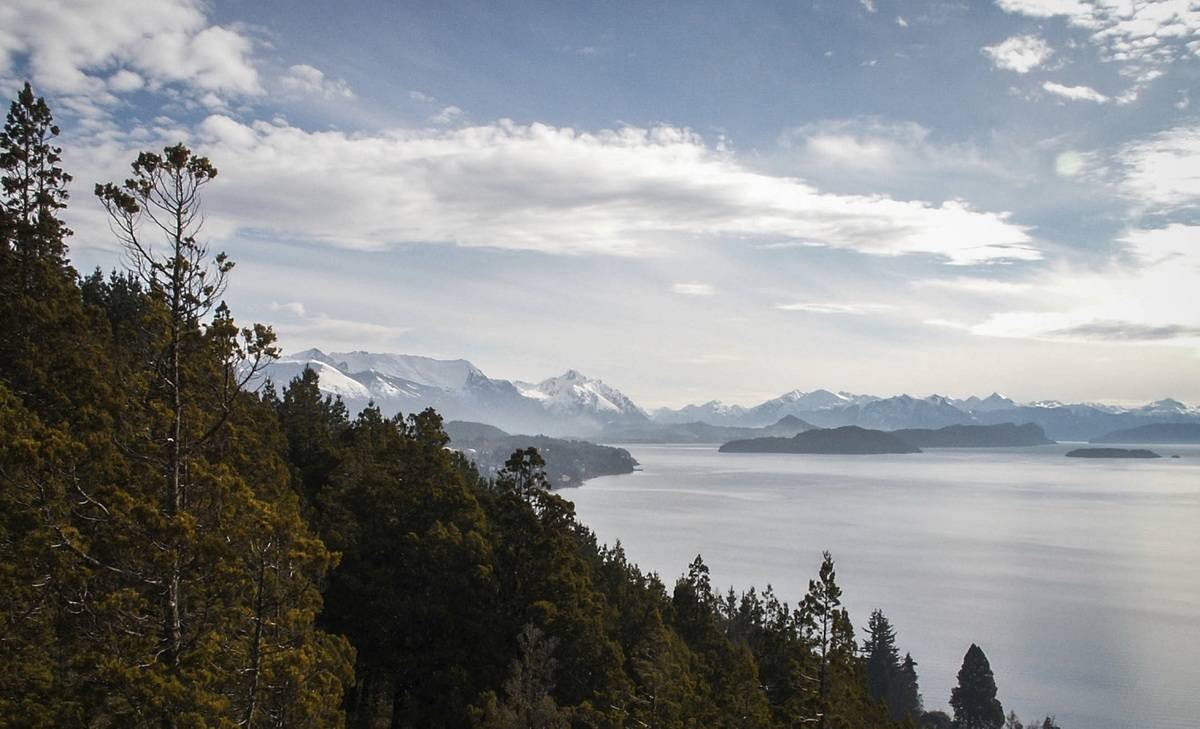Sandpiper: Atlantic to Pacific in Style
19 Days
This trip combines the haunting beauty of Patagonia’s glacier-carved Torres del Paine, the Iguazú Falls and the Patagonian lake district with three of the continent's most vibrant and exciting cities: Rio de Janeiro; Buenos Aires and Santiago. Travel in comfort: all your transport is private and the accommodation is among the best locally.

Home » Sandpiper: Atlantic to Pacific in Style
Itinerary Highlights
- Visit the Brazilian Side of Iguazu Falls
- Visit the Argentine side of Iguazu Falls
- Southern lakes crossing
- City Tour of Buenos Aires
- Boat Trip to Glacier Grey
- Wine tour of the Central Valley
- See the views from Sugar Loaf Mountain
Itinerary in Brief
- Day 1: Arrive at Rio de Janeiro
- Day 2: Guided excursion to Sugar Loaf Mountain
- Day 3: Visit to Corcovado Mountain
- Day 4: Fly to Iguaçú, cross into Argentina. Visit the Brazilian side of the Iguaçú Falls
- Day 5: Excursion to the Argentine side of the falls
- Day 6: Fly to Buenos Aires
- Day 7-8: Further explore the Argentine capital or nearby Uruguay
- Day 9-10: Fly to Bariloche in the lake district. Optional hikes
- Day 11: Trans-Andean lake crossing to Puerto Varas, Chile
- Day 12: Optional Visit in Chiloe Island
- Day 13: Fly to Punta Arenas; by road to your lodge
- Day 14-15: Explore Torres del Paine on a number of included excursions
- Day 16: Drive to Punta Arenas
- Day 17: Fly to Santiago, explore the capital
- Day 18: Visit a nearby vineyard; optional visit to Valparaiso
- Day 19: Departure
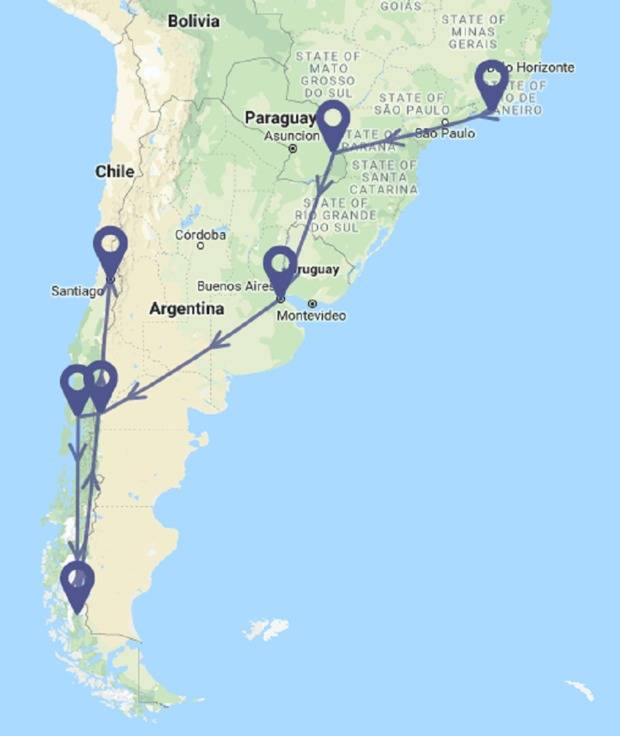
Day 1: Arrive at Rio de Janeiro
Those passengers arriving on an international flight will be met by the tour leader or a local representative at the airport and escorted to the group hotel.
Day 2: City tour guided and excursion to Sugar Loaf Mountain
Today there is a tour to familiarise yourself with this most iconic of cities. As part of this we also include a trip to Pão de Açucar (Sugar Loaf Mountain). Ride the cable-car up the twin granite mountains protruding from the ocean and enjoy the magnificent views back over the beaches, Botafogo Bay with its bobbing yachts and into the mountains beyond. There’s a lovely (and safe) nature walk round the foot of the mountain, or you could pop for a beer into the nearby villagey quarter of Urca, leafy home of artists and TV stars.
Day 3: Visit to Corcovado Mountain
In the morning you'll board a steep rack-and-pinion railway which glides up through tropical Tijuca National Park, the largest urban forest in the world dripping with fruit and flowers, to reach the summit of Corcovado Mountain. Here the famous 40m art deco Christ the Redeemer statue soars above the city, arms outspread benevolently. On a clear day, the views over the city and out across the ocean and outlying islands are stupendous.
Day 4: Fly to Iguaçú, cross into Argentina. Visit the Brazilian side of the Iguaçú Falls
Fly to Foz do Iguaçú in the subtropical south-west corner of Brazil (2 hours). The Iguazú Falls are unquestionably one of the most extraordinary natural wonders in the world. A total of 275 falls thunder through dense forest over a 2.5km stretch. The u-shaped Devil's Throat is the main gorge, where the frothy water of the Iguazú River crashes over a 1.5km-wide precipice and columns of vapour are thrown skyward. Elsewhere the river flows decorously through the rainforest breaking up into dozens of smaller falls. You might spot toucans with their outsized bright orange beaks perched in the foliage above the tumultuous waters.
En route to your hotel in Argentina you head out to the Brazilian side of the falls, from where there is a broad panorama of these magnificent cataracts, and there are some excellent opportunities to photograph the full sweep of the cascades. Before leaving the Brazilian side, you could stop off at the excellent and rather quirky bird park just outside the entrance of Iguaçu National Park. The enclosure is home to a huge variety of birds and wildlife, including toucans, trogons and the coatimundi, from the same family as the racoon.
Day 5: Excursion to the Argentine side of the falls
Explore the Argentine side of the falls. From the National Park Visitor Centre, where there is a display that illustrates the biodiversity of the region's tropical rainforest, a little natural-gas-powered train transfers you to Cataratas Station where the Upper Walk begins. This sequence of causeways and passarelles links dozens of tiny basalt islands at the top of a sheer rock face and the walkways cross the myriad streams of the River Iguazú as they cascade over the lip of the precipice. Your breath is quite literally taken away as the water thunders on to the rocks below.
The train continues to Devil's Throat Station where a 1km-long walkway leads across the river to the thunderous Garganta del Diablo, the Devil's Throat. From this vantage point you can feel the incredible power of the water, and the flow is mesmeric as it plummets into the vortex below.
Day 6: Fly to Buenos Aires
Fly to the Argentine capital, Buenos Aires, an elegant and cosmopolitan city famed for the fascinating port district of La Boca with its cobbled streets and brightly painted houses. It was here that the tango was born, and Diego Maradona honed his footballing skills.
The centre of the city is the historic heartland, government buildings and churches as well as chic shopping districts, which have a nostalgic, Parisian feel. The bohemian district of San Telmo is full of quaint old houses interspersed with antiques shops, tango bars and excellent restaurants. Slightly further out of town is the Recoleta district, even more evocative of belle époque French and Italianate architecture. During the winter months, wealthy female residents parade the streets in their fur coats and improbable, towering hairstyles, and take afternoon tea in the city's ornate cafés.
Explore these fascinating streets on your guided city tour.
Day 7-8: Further explore the Argentine capital or nearby Uruguay
Make the most of some free time to shop, have a drink and a pastry in a tea-room or peruse the items on display in one of the many markets. It's fun to promenade up and down the quay in the city's splendidly renovated port district, Puerto Madero, which has trendy loft apartments, a string of open air restaurants and a small marina.
To take a break from the city's frenzy, you can travel by motor catamaran across the River Plate border to Colonia in Uruguay (don't forget your passport) where you can wander cobbled streets and admire the squat colonial houses from the top of the lighthouse, and have a glass of wine or lunch in the yacht club.
Day 9-10: Fly to Bariloche in the lake district. Optional hikes
Fly south to Bariloche (2 hours). This resort town is situated on the shores of Lake Nahuel Huapi, and was founded barely a century ago. It has a distinctive Alpine feel to it, and in winter it operates as a ski resort. There is a museum detailing the history of the native Tehuelche Indians and the story of the area's colonisation. Butch Cassidy and the Sundance Kid lived and ranched not far from here. There is an included excursion around the ‘Circuito Chico’ providing visitors with a general overview of the breathtaking surrounding area. The 60km circuit is all along paved and includes the viewpoint at Cerro Campanario where a seven-minute chair ride offers splendid views of the mountains and lakes below.
Spend your free time in cosy cafés savouring locally manufactured chocolate, or shopping for souvenirs. Out of town, venture along the lake-shore for sumptuous views of the forested mountains. There are some excellent walking trails including one which climbs Cerro Otto mountain or alternatively jump on the cable car.
Day 11: Trans-Andean lake crossing to Puerto Varas, Chile
Today you cross the Andes on a unique journey which passes through the mountains following a series of glacial lakes along forested roads. You switch between water and land as you head towards Chile, boarding a ferry to cross Lake Todos Los Santos, which straddles the Argentine-Chilean border and is overlooked by towering, snowy peaks. Your final stop is Puerto Varas, in the heart of the Chilean lake district. On a clear day you won't tire of the vistas of volcanoes, waterfalls and sweeping forests.
Puerto Varas is situated on the shores of Lake Llanquihue (one of the largest natural lakes in South America). Towering snow-capped volcanoes punctuate a patchwork landscape of cultivated hills and pastures. The town sits in the shadows of the perfect conical peak of the Osorno and Calbuco volcanoes.
Day 12: Optional Visit in Chiloe Island
There is time today to wander around the town of Puerto Varas. Originally colonised by German immigrants, it has a distinctive, Bavarian feel, and many inhabitants are fair-haired and blue-eyed. There are some excellent seafood restaurants and cafés to while away a day at leisure.
Alternatively, we strongly recommend a full-day excursion to Chiloé. This extraordinary island developed largely independently from the mainland and has a distinct history, architecture and mythology. Alighting on its shores is like stepping back into a time of myths and legends. Half the population works in agriculture, the techniques of which have remained unchanged for centuries; distinctive ox-driven carts are to be seen trundling down the island's unpaved roads past unique wood-shingled churches and there are several folksy fishing ports where you can savour fresh oysters.
Day 13: Fly to Punta Arenas; by road to your lodge
After a short drive to Puerto Montt, a 2 hour flight takes you south to Punta Arenas. On a clear day you have views of the southern icecap, its fjords, volcanoes and glaciers. Approaching the city you see the rust brown Patagonian steppes, pitted with small lagoons, stretching out towards the Straits of Magellan. On the other side of the water rise the mountains of the windswept island of Tierra del Fuego.
From the airport continue by private vehicle to Puerto Natales, a small town with a frontier feel on the shores of Last Hope Sound, frequented by pelicans, black-necked swans and cormorants. The road journey carries on to the edge of Torres del Paine National Park and your lodgings at the luxurious fixed tent Patagonia Camp.
Day 14-15: Explore Torres del Paine, including a boat trip to Glacier Grey
You have two full days to explore the park, and there are excellent hiking trails that wind alongside the glacial lakes with close-up views of the tortured rock towers and needles rising 3,000m into a tempestuous sky. Keen walkers can hike for views over Glacier Grey, or to the base of the vertical granite towers (both 8 hours). With 10 different walks available there should be something suit all needs and abilities. Alternatively you can take to vehicles to tour the park or choose one of the excursions closer to home, straight from the property itself such as kayaking in the secluded bays of Lago Toro.
There are also optional excursions you may wish to choose such as a boat trip on Lago Grey, dotted with icebergs which have broken free from the glacier which plugs the lake, the looming front wall of which you approach in your craft. Or for a different perspective canter through the steppes under the watchful eye of expert local horsemen.
Day 16: Drive to Punta Arenas
From Torres del Paine you head to Punta Arenas on the shores of the Magellan straits. Punta Arenas was an important, British-influenced trading centre before the opening of the Panama Canal turned it into a backwater; the region's fortunes were only briefly revived during a short-lived gold rush. To add to its woes, the sheep-rearing business has never recovered from the catastrophic collapse of the price of meat and wool. No pure-blooded indigenous people are left alive here; having survived for centuries the rigours of the Antarctic climate they were annihilated by the diseases brought in by sailors and missionaries at the turn of the 20th century.
Day 17: Fly to Santiago, explore the capital
Fly north to Santiago (4 hours), the cosmopolitan Chilean capital. Santiago is laid out in a broad valley below the snow-capped Andes.
For a panoramic view over the city, visit Cerro Santa Lucía, a central, rather romantic park. For even more panoramic vistas, a cable car leads to the summit of San Cristóbal, where you can join Chilean families wandering along the leafy paths. Afterwards, have a beer at one of the pavement cafés in Bellavista. This is an Italian quarter of narrow streets peppered with bars and shops selling local lapis lazuli (only Chile and Afghanistan produce the stones in commercial quantities).
Day 18: Visit a nearby vineyard, optional visit to Valparaiso
A guided excursion takes you out of the city through a pretty Mediterranean landscape to a nearby winery. An hour's drive from Santiago takes you to the Central Valley, blanketed in a patchwork region of regimented vineyards. Here you will have the chance to sample some of the wines, and learn about the national grape varieties. The Carmenère grape originated in France but has been all but wiped out in Europe. Cuttings of the vine arrived in Chile in the 19th century, and the region's natural boundaries (bordered by the Andes, the ocean, the desert and glacial plains) protected it from disease. For many years it was processed as Merlot, but the distinct properties of Carmenère were recognised in the 1990s. It produces a spicy, fruity red which is deep crimson in colour.
As the vineyards are located to the west of Santiago, you may like to extend the excursion with an optional visit to Chile's second city, Valparaíso. This lively seaport is built on a series of hills which form a backdrop to the wide bay, with views over the seaside resort of Viña del Mar. You can wander through the steep, winding streets and among the brightly-coloured colonial homes built for 19th century British and German merchants, or take a ride in one of the creaky wooden funiculars which link the cliff-top communities.
Day 19: Departure
Today, you will be transferred from your hotel to the airport in time for your International departure flight.
Suggested Accommodation
| City | Accommodation |
|---|---|
| Rio de Janeiro | Miramar Hotel by Windsor |
| Puerto Iguazú | Loi Suites |
| Buenos Aires | Recoleta Grand Hotel Buenos Aires |
| Bariloche | Cacique Inacayal |
| Puerto Varas | Hotel Cumbres Puerto Varas |
| Torres Del Paine | Patagonia Camp |
| Punta Arenas | Hotel Cabo de Hornos |
| Santiago | Hotel Cumbres Lastarria |
Whats included?
- Internal airfares as specified
- All land transport
- Accommodation
- Meals as specified
- Activities as specified
- English speaking guide
What’s not included?
- International airfares
- International airport transfers
- Arrival/departure taxes or reciprocity fees, visa fees where applicable
- Travel insurance
- Optional excursions (please ask us for details)
- Gratuities
- Any items not listed as included
Notes
This tour operates with a minimum of 4 and a maximum of 20 passengers. The minimum age is 12 years. Hotels are subject to change due to availability.

